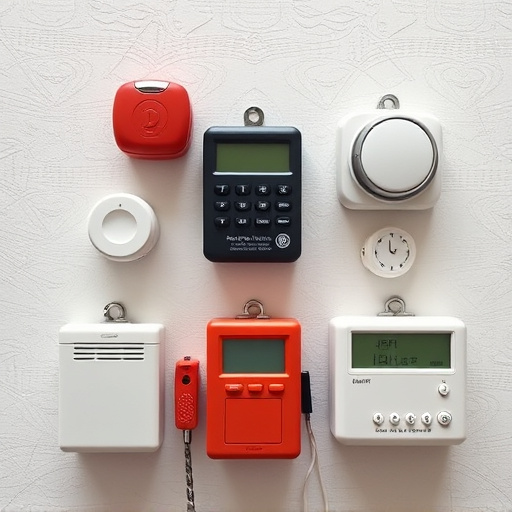Lone workers face safety risks due to isolation and environmental factors hindering traditional alarms. Personal alarm devices with high-decibel sounds that penetrate walls are crucial for swift emergency responses, enhancing overall preparedness. Sound penetration walls ensure clear alarm transmission in noisy or blocked environments, providing peace of mind and precise location data. Effective safety alerts use distinct, easily recognizable personal alarm sounds with strong signal penetration to ensure timely intervention.
In today’s digital era, ensuring worker safety is paramount, especially for lone workers facing heightened risks. This article explores comprehensive solutions for enhancing their safety with a focus on personal alarm devices and sound penetration walls. By understanding the unique challenges of lone worker environments, we can implement effective strategies. Personal alarm devices serve as lifelines, while sound penetration walls ensure critical communication, enabling swift assistance in emergencies. Discover how these tools, together, create robust safety alert systems.
- Understanding Lone Worker Risks
- The Role of Personal Alarm Devices
- How Sound Penetration Walls Help
- Ensuring Effective Safety Alerts
Understanding Lone Worker Risks
Lone workers, by definition, operate independently without immediate supervision or assistance nearby. While this freedom offers numerous advantages, it also presents unique safety challenges. Understanding and mitigating these risks is crucial for protecting individuals in these roles. One of the primary concerns with lone worker safety is communication and response time in case of emergencies. Their isolation can make it more difficult for others to recognize when help is needed quickly.
Additionally, the physical environment plays a significant role. Whether working outdoors or in enclosed spaces, factors like dense foliage that obscures sounds or solid walls that prevent signal penetration can hinder the effectiveness of traditional communication methods and personal alarm systems. These obstacles underscore the importance of choosing robust safety solutions designed to overcome such challenges, ensuring lone workers have reliable tools to summon assistance when required.
The Role of Personal Alarm Devices
Personal alarm devices play a pivotal role in ensuring the safety of lone workers, especially those who operate in remote or hazardous environments. These compact and portable tools are designed to be easily accessible, allowing individuals to quickly activate a high-decibel alarm in case of distress. The powerful personal alarm sound is capable of penetrating walls and barriers, ensuring that help can be summoned swiftly, even if the worker is inside a structure. This direct approach to alerting emergency services or colleagues is crucial in situations where communication might be challenging due to terrain, weather conditions, or the nature of the task at hand.
By incorporating personal alarm devices into their safety protocols, organizations and individuals can significantly enhance response times during emergencies. The reliability of these alarms, combined with their easy usability, makes them indispensable for lone workers who need a rapid means of communication in case of an accident or unexpected event.
How Sound Penetration Walls Help
Sound penetration walls play a pivotal role in enhancing the safety of lone workers by ensuring their personal alarm signals can penetrate through barriers effectively. These specialized walls are designed to transmit sounds clearly, even in noisy environments or when physical barriers might impede direct sound transmission. This is crucial for workers who operate in remote areas or isolated settings where immediate assistance during an emergency could be challenging to coordinate.
By utilizing sound penetration walls, the range and effectiveness of personal alarm signals are significantly improved. This technology allows lone workers to rely on the reliability of their alarms, ensuring help can arrive promptly if needed. Whether it’s a construction site, outdoor surveillance, or remote field work, these walls provide an added layer of protection, giving workers peace of mind and emergency responders precise location information.
Ensuring Effective Safety Alerts
Ensuring effective safety alerts for lone workers involves several key strategies. One crucial aspect is the use of personal alarm sounds that are distinct and easily recognizable, even in noisy environments or through wall penetration. These alarms should be designed to capture attention quickly and convey urgency, allowing workers to signal distress or danger promptly.
Additionally, the system must penetrate walls effectively to ensure signals reach help centers or other lone workers nearby. This requires advanced technology like high-decibel sounds and directional antennas that can overcome acoustic barriers. By integrating these features, safety alert systems become more reliable, increasing the chances of timely intervention in emergency situations.
Lone workers face unique risks, but with the right safety alert systems in place, these challenges can be significantly mitigated. By understanding the specific hazards and employing tools like personal alarm devices and sound penetration walls, workers can enhance their safety and peace of mind. Ensuring effective alerts involves choosing the right technology, proper training, and clear communication protocols. Together, these measures create a robust safety net, allowing lone workers to perform their duties with confidence and security.
